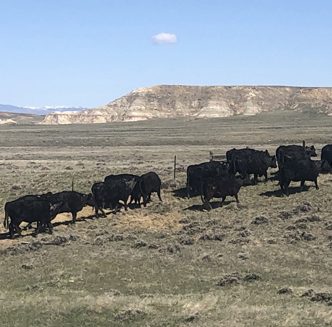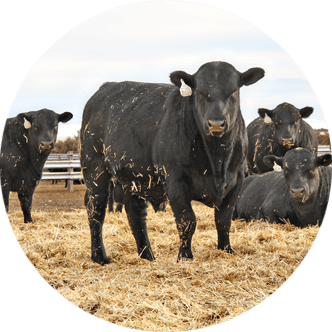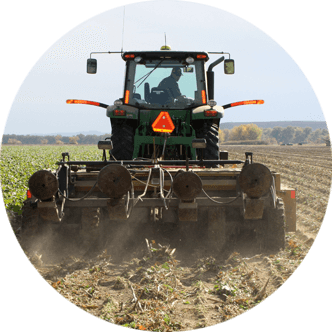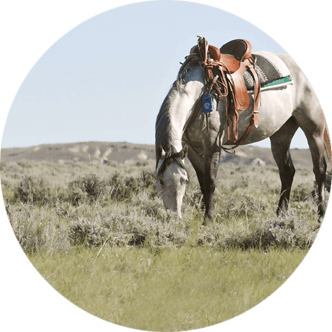Drought conditions contribute to wildfire, water and ag issues across the Southwest
On Feb. 10, the National Drought Mitigation Center (NDMC) released its drought conditions and impact summaries for the first month of the year, showing continued degradation and significant impacts across the Southwest region.
“During what was a cold, dry January for the U.S., 49 impacts describing water issues were recorded in the Drought Impact Reporter,” writes Denise Gutzmer in NDMC’s Drought Impacts Summary January 2025. “Texas had a dozen impacts documenting water shortages and dry landscapes. Arizona and Utah each had five impacts related to water issues.”
Drought in the West
According to NDMC’s Drought Climate Summary January 2025, written by Curtis Riganti, drought conditions mostly worsened in the West with one- and two-category degradations occurring across southern California, western New Mexico, Arizona and parts of southern Utah.
One-category degradations also occurred in eastern Idaho, northwest Montana and western Washington, while a small area of western Washington saw two-category degradations.
“Abnormal dryness (D0) or worse coverage increased from 70.34 to 72.17 percent after dropping to 67.03 percent in mid-January,” Riganti says. “Moderate drought (D1) or worse coverage increased from 39.86 to 44.16 percent. Severe drought (D2) or worse coverage increased from 19.17 to 25.13 percent, and extreme drought (D3) coverage grew from 6.85 to 7.66 percent, after peaking at 8.5 percent in late January.”
Riganti further notes parts of California, Nevada, northwest Montana, Arizona, western New Mexico, Utah, Idaho, western Oregon and much of Washington saw far less precipitation than usual, while above normal precipitation fell in parts of eastern New Mexico and parts of central and southern Montana.
Additionally, warmer than normal temperatures occurred in parts of northeast Utah, California’s Central Valley and central Montana, while areas in Arizona, New Mexico, Idaho and the rest of Montana saw temperatures ranging from two to eight degrees below normal.
Conditions in the High Plains
Conditions across the High Plains states were more of a mixed bag, with one- to three-category degradations occurring across southwest Colorado; one- and two-category degradations occurring in parts of southwest Nebraska and one-category improvements occurring in western and northern Wyoming, central Colorado, east-central Kansas, northwest South Dakota and southwest North Dakota.
While D0 coverage grew from 73.72 to 76.75 percent in the region, D1, D2 and D3 coverage actually decreased to 59.75 percent, 28.73 percent and 7.02 percent, respectively.
“Well below normal precipitation fell across southwest Colorado, parts of western Wyoming, southeast North Dakota, eastern South Dakota and most of eastern Nebraska – excluding the southeast counties,” Riganti explains. “Above normal precipitation – much of it from a blizzard in early January – fell in north-central and northeast Kansas, parts of eastern Colorado and north-central Wyoming.”
Additionally, Riganti notes most of Colorado, Wyoming, Kansas and the western parts of South Dakota and Nebraska saw colder than normal temperatures, with central and eastern Colorado, central and eastern Wyoming and parts of central Kansas falling nearly six to 10 degrees below normal.
Nationwide impacts
The cold, dry conditions seen throughout the month of January resulted in a total of 49 impacts across the U.S., many of which occurred in the Southwest region, according to the Drought Impact Reporter.
The nation’s cattle herd, reported at 86.7 million head as of Jan. 1, according to the U.S. Department of Agriculture, is down one percent from a year ago and the smallest on record since 1951.
Drought conditions are playing a key role in the continued decline of the U.S. cattle inventory, as producers have been wary about restocking their herds with operational costs, high interest rates and other factors brought on by dry conditions.
Drought also played a role in one of January’s biggest tragedies – the more than six deadly wildfires scorching over 50,000 acres across Los Angeles County, resulting in more than $14.8 billion in damages, 92,000 people displaced and at least 29 people dead.
Gutzmer explains southern California has been considerably dry since the water year began in October, and tinder dry fuels which are usually wet this time of year, combined with Santa Ana winds, “provided the ingredients for some of the most devastating wildfires in Los Angeles’ history.”
Down in Texas, persistent drought has stressed water supplies.
According to a Jan. 3 KSAT article, restrooms at the Enchanted Rock State Natural Area were closed on Jan. 1 because the park’s wells could not keep up with water demand – posted at about 7,000 gallons per day.
On Jan. 13, CBS Austin reported lack of rain at Palmetto State Park in south-central Texas caused the park’s swamp – usually around three feet deep – to completely dry up, killing native grasses, hackberries and cedar elms and threatening the ability of green tree frogs to reproduce and lay eggs.
In a Jan. 30 article, AZCentral notes the beginning of January marked 159 days without measurable rainfall at the Sky Harbor Airport in Phoenix, which is the second-longest dry spell on record, while NWS Las Vegas says Jan. 29 marked 200 days since Las Vegas received any moisture.
A Jan. 27 article in the Nevada Current notes, in an effort to provide water for wildlife, the Nevada Department of Wildlife (NDOW) hauled 37,000 gallons to existing stations in the mountains of southern Nevada in late December, where water and forage have become alarmingly scarce.
Despite their efforts to provide water, NDOW believes the lack of moisture is reaching emergency levels as many of the state’s Bighorn sheep have little to nothing to eat.
Livestock producers in the neighboring state of Utah are also worried about lack of feed.
A Jan. 31 Fox 13 article notes dairy farmers in Cache Valley are concerned the lack of snow this winter may not provide enough irrigation water to grow hay in the summer.
A separate Fox 13 article says farmers and ranchers in Washington County, Utah have found the ground too dry to plant alfalfa, hay, wheat and oats, which are usually planted in January.
According to the article, this area of the state is currently witnessing its driest winter on record, with no significant rainfall reported since spring of 2024.
Hannah Bugas is the managing editor of the Wyoming Livestock Roundup. Send comments on this article to roundup@wylr.net.





